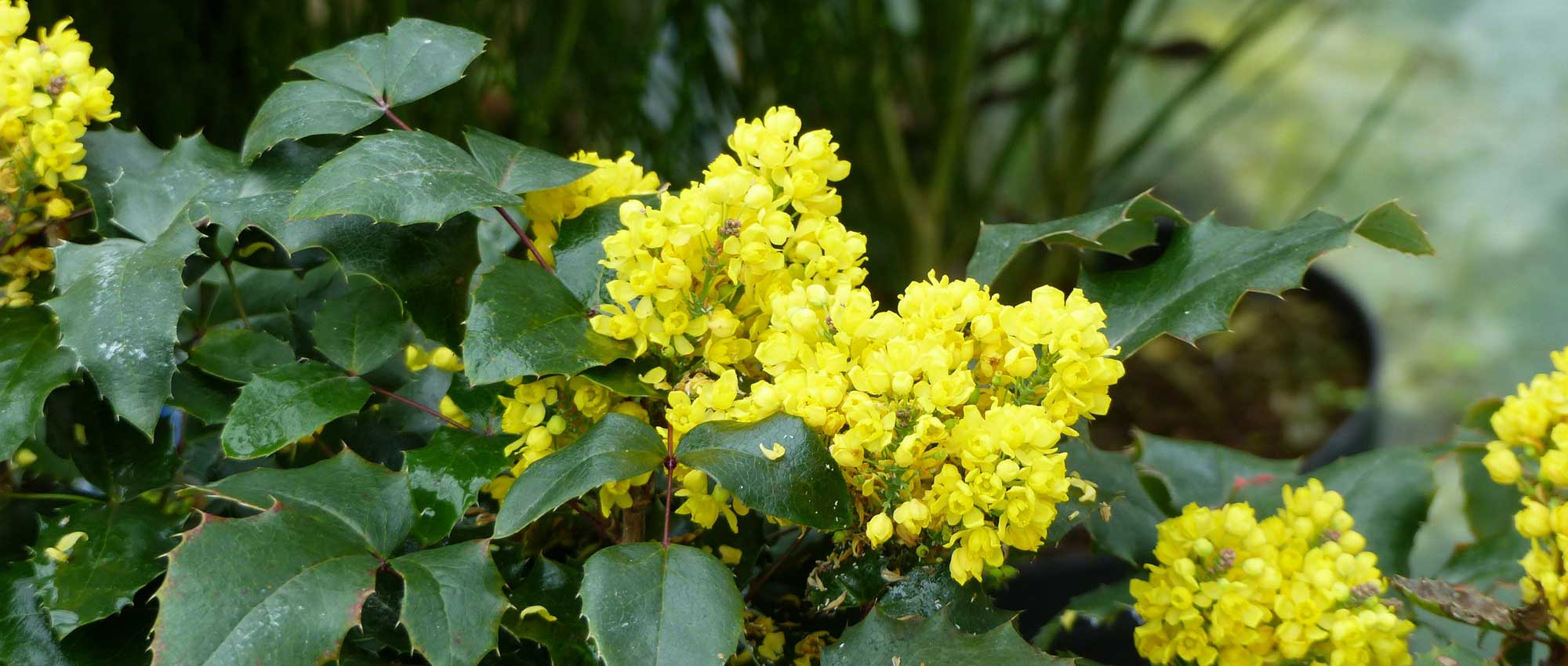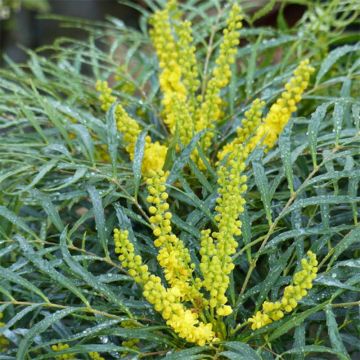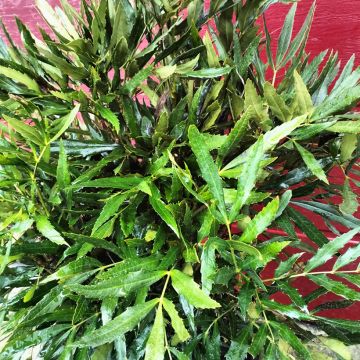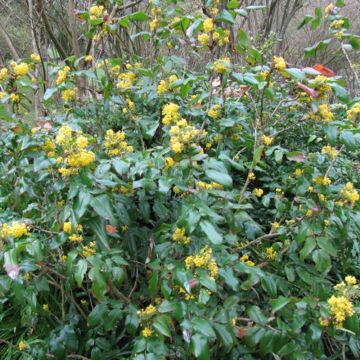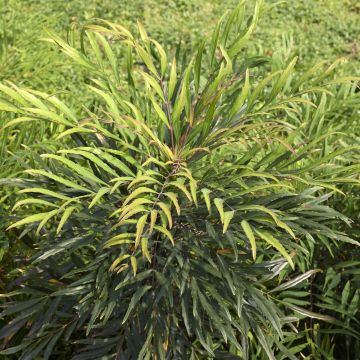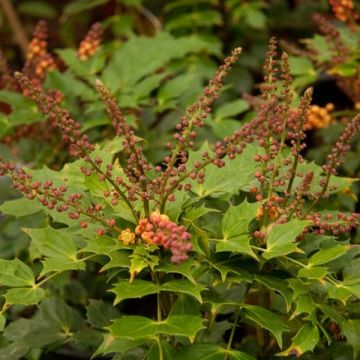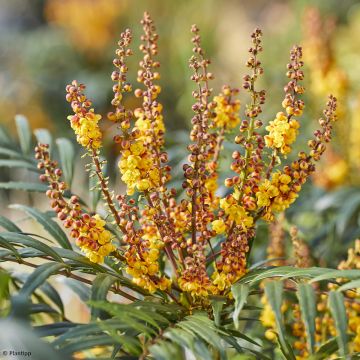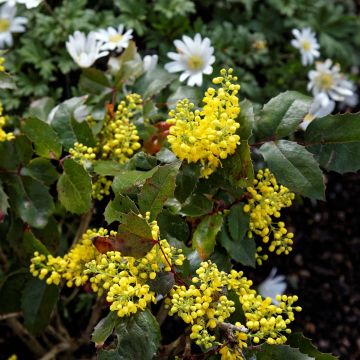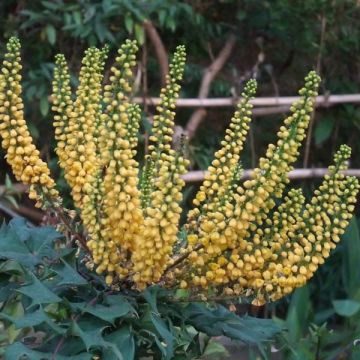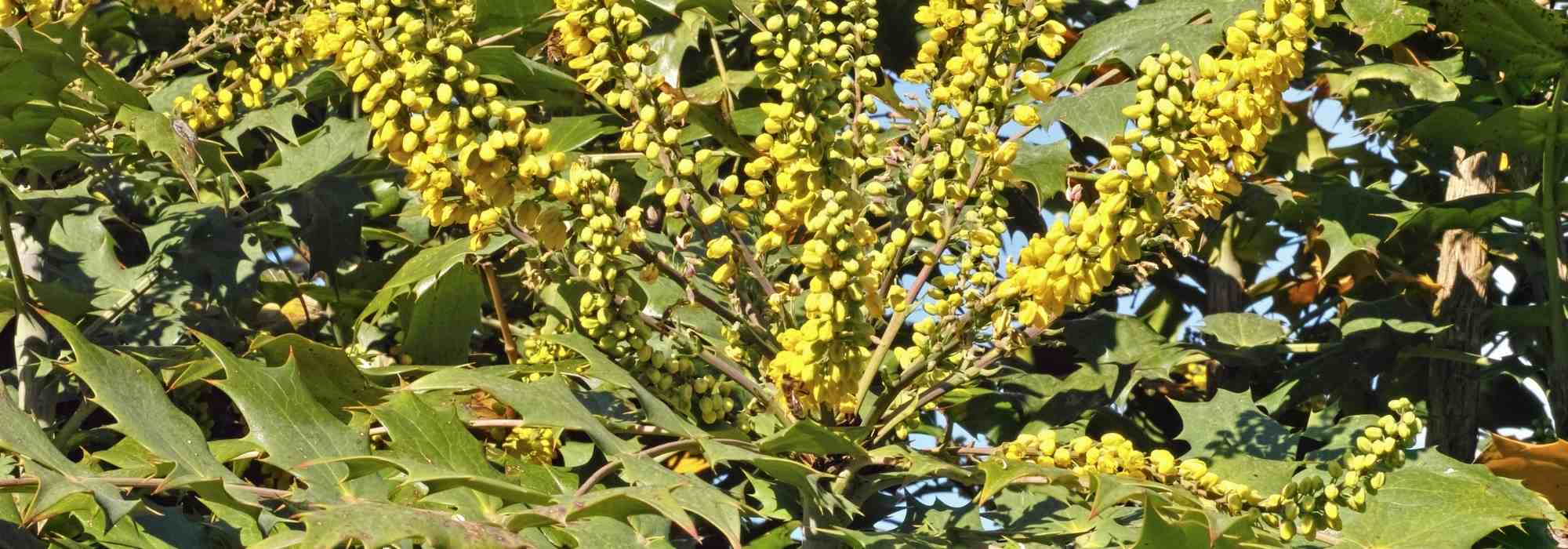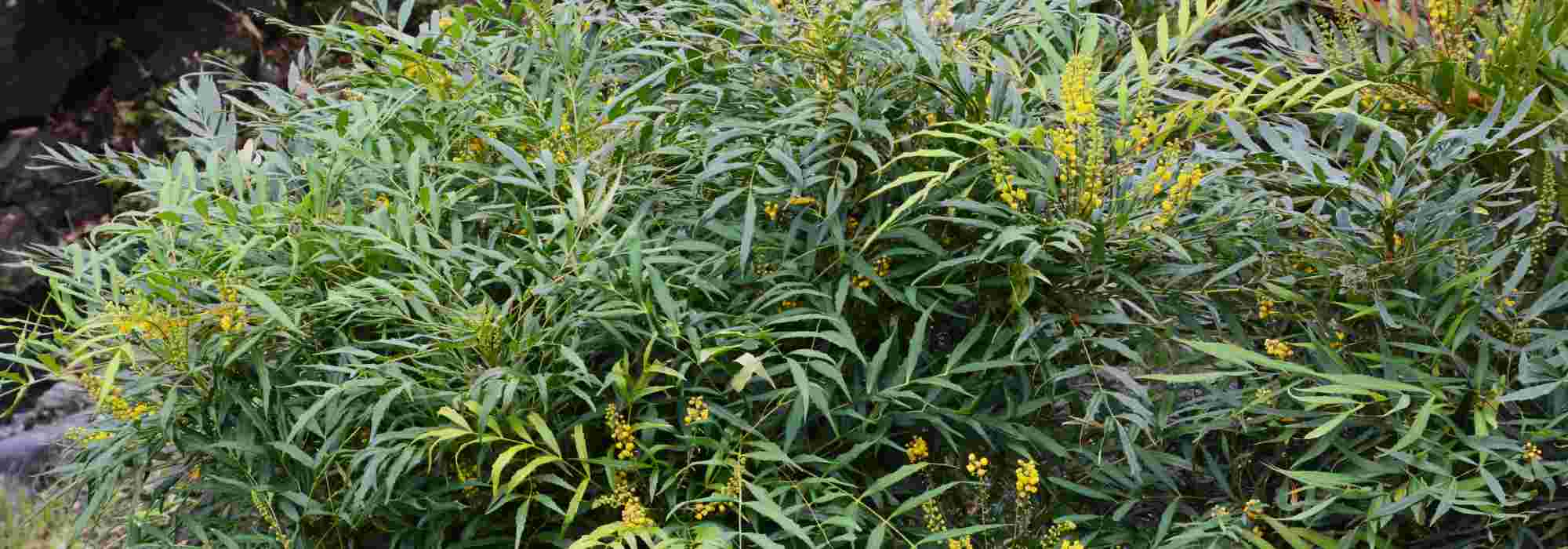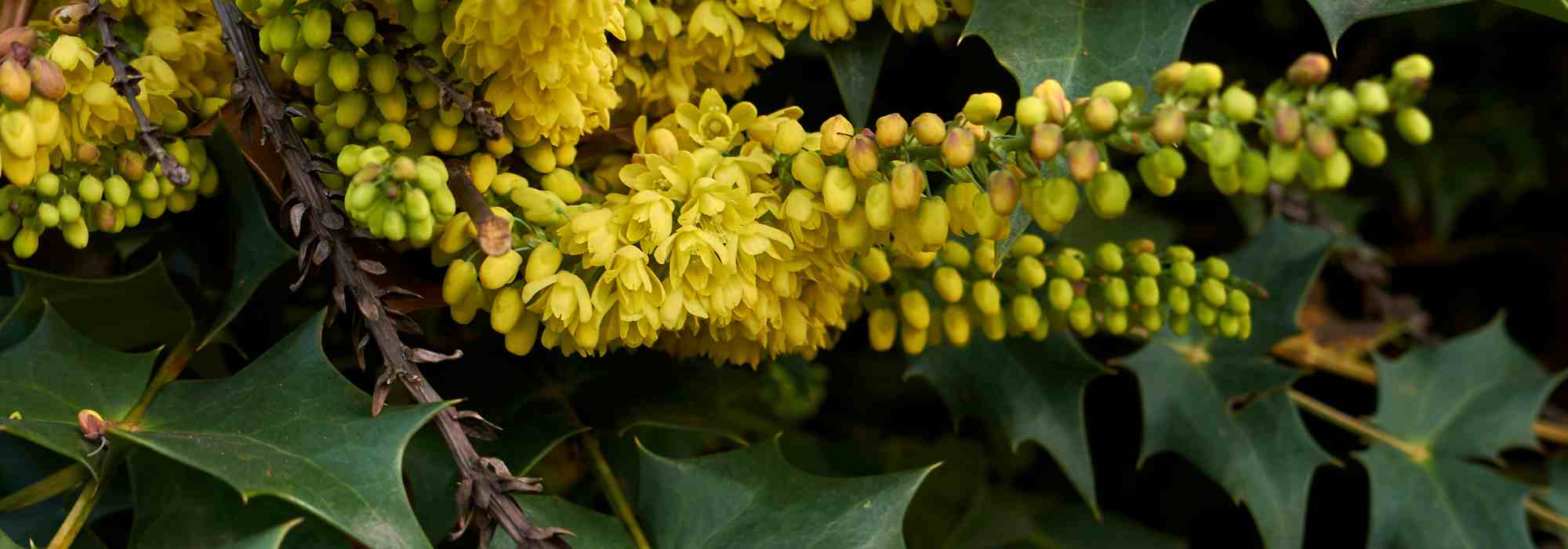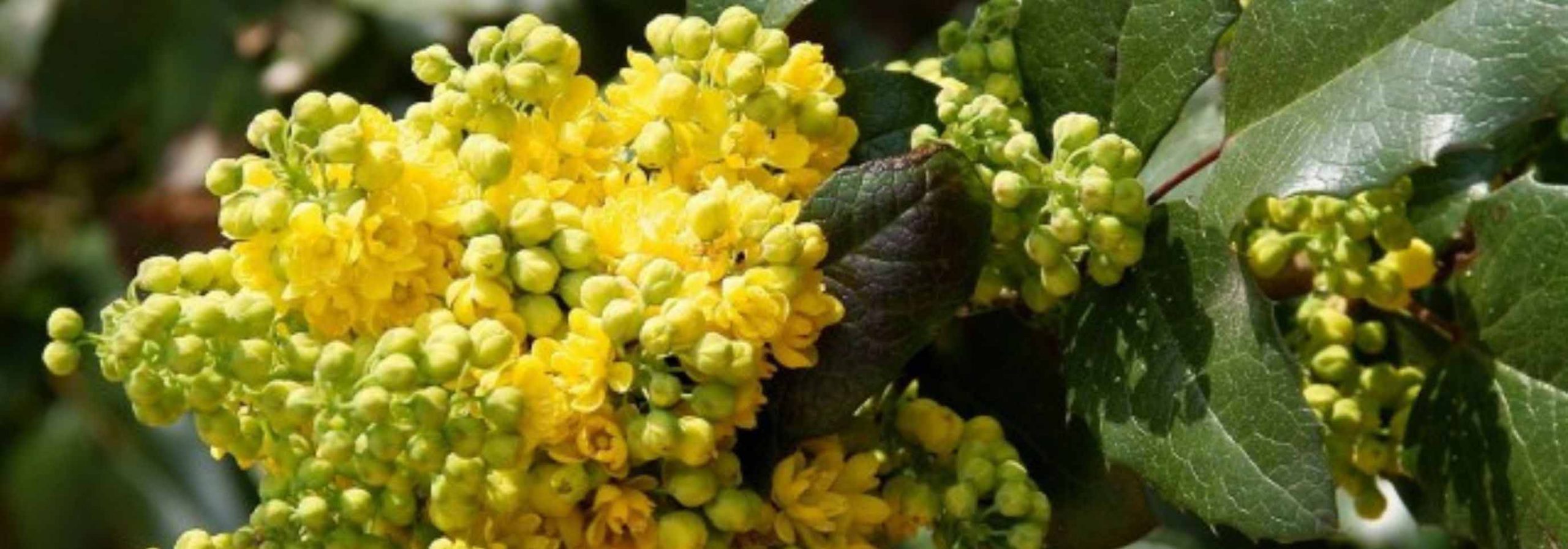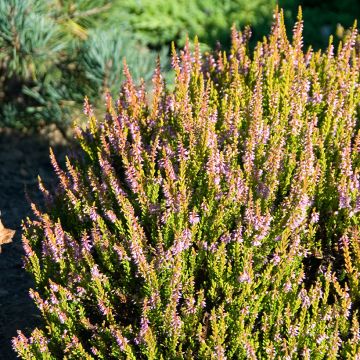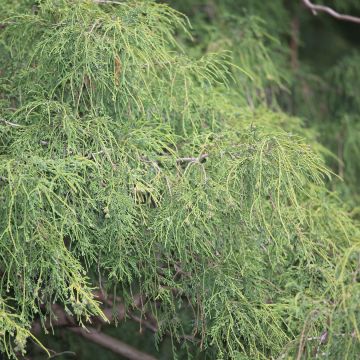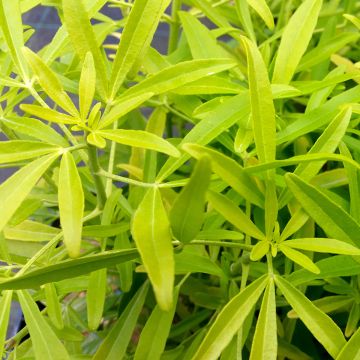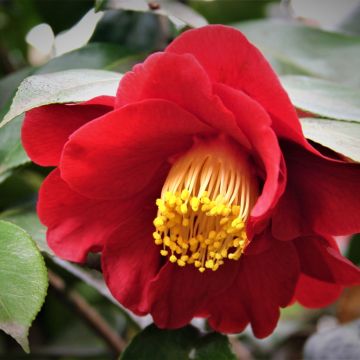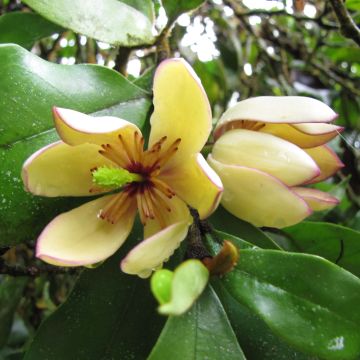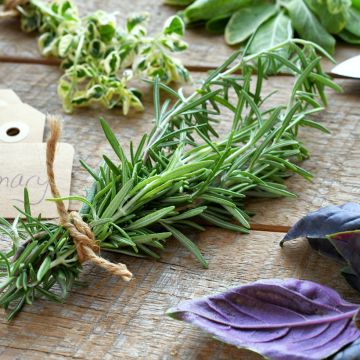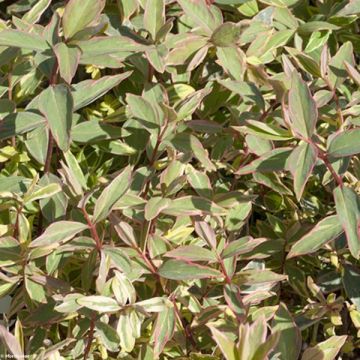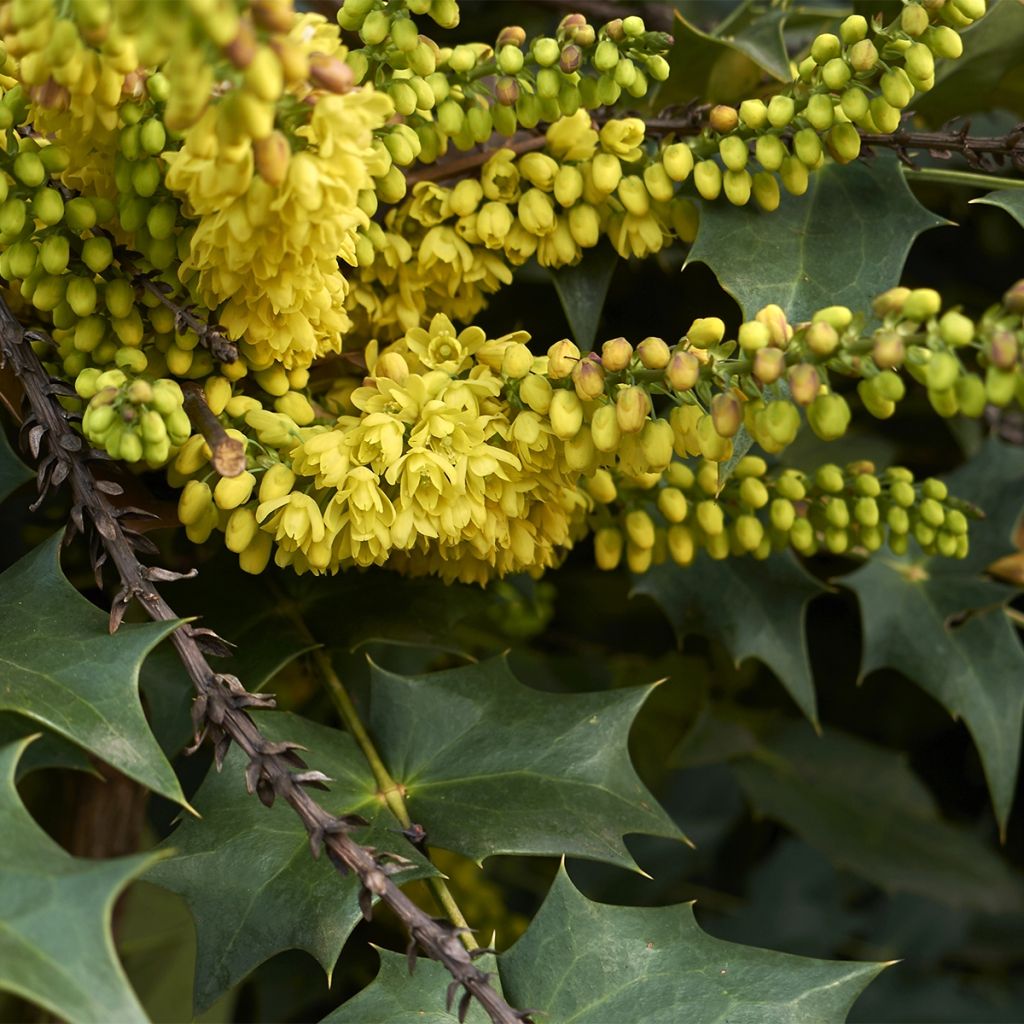

Mahonia (x) wagneri Fireflame
Mahonia x wagneri Fireflame
Mahonia x wagneri Fireflame
Oregon grape, Mahonia
Superbly developed, healthy mahonia, and to top it off, in flower. A sixth mahonia, after two Charity and 3 soft caress ordered in a year from Promesses de fleurs, and all in excellent condition. Thank you for this beautiful flower quality!
Caroline, 23/02/2023
Special offer!
Receive a €20 voucher for any order over €90 (excluding delivery costs, credit notes, and plastic-free options)!
1- Add your favorite plants to your cart.
2- Once you have reached €90, confirm your order (you can even choose the delivery date!).
3- As soon as your order is shipped, you will receive an email containing your voucher code, valid for 3 months (90 days).
Your voucher is unique and can only be used once, for any order with a minimum value of €20, excluding delivery costs.
Can be combined with other current offers, non-divisible and non-refundable.
Home or relay delivery (depending on size and destination)
Schedule delivery date,
and select date in basket
This plant carries a 24 months recovery warranty
More information
We guarantee the quality of our plants for a full growing cycle, and will replace at our expense any plant that fails to recover under normal climatic and planting conditions.

Would this plant suit my garden?
Set up your Plantfit profile →
Description
The Mahonia x wagneri 'Fireflame' is a variety of hybrid Mahonia that stands out for the superb autumn and winter colors of its foliage. In late winter, this evergreen bush offers a remarkable spectacle with its purple holly-like leaves, yellow flowers, and clusters of blue-black fruits. Slightly fragrant and nectar-producing, they will remind gardeners in colder regions of the flowering of mimosa trees. Truly adaptable, this mahonia tolerates a wide range of soils. Whether in the ground or in pots, it will thrive in all climates, even in the shade of large trees.
The Mahonia x wagneri Fireflame is an evergreen bush from the berberidaceae family, just like Berberis, Nandina, and Epimedium. It is a hybrid between the Mahonia aquifolium and its close relative M. pinnata, two species native to the northwest U.S.A, particularly California, Oregon, and British Columbia. Unlike Asian species, Mahonias from the American West tolerate the presence of limestone in the soil and are content with ordinary soil, even dry in summer once well established.
The 'Fireflame' cultivar, with moderately fast growth, has a bushy and upright habit. The bush reaches up to 2 m (7 ft) in height and 1.75 m (6 ft) in width. Its leaves persist in winter. They are alternately arranged on the branches, measuring about 30 cm (12 in) long, and are divided into tough and spiny leaflets. The foliage, bright green-yellow in spring, darkens in summer and takes on shades of orange, red, and purple under the effect of cold in autumn and winter. From February, or March depending on the region, numerous small flowers appear, slightly fragrant, gathered in generous pyramidal clusters of bright yellow color, measuring 10 to 15 cm (4 to 6 in). Highly visited by bees, these nectar-producing flowers give way to fairly decorative blackish-blue berries. Some birds are fond of these sour little fruits.
Perfectly hardy, tolerant of summer drought and limestone soils, unaffected by the roots of large trees, Mahonia 'Fireflame' is a colorful and versatile bush that can be used to bring color to the garden in all seasons. Resistant to wind and urban pollution, it tolerates full sun in cool regions or fairly dense shade in hot climates. Few shrubs possess as many qualities that make it almost indispensable in the garden. Mahonia x wagneri, like its parents, is highly adaptable and responds well to pruning, for example in a hedge. It can be used as a specimen in a small garden, in a shrub bed, as a defensive hedge, or even in pots on the terrace. Berberis and Sarcococca make good companions in the shade of large trees. In a Mediterranean-themed bed, for example, it can be associated with Garrya elliptica James Roof, Prunus illicifolia, and evergreen ceanothus, all native to California.
Tip: Do not plant too densely in beds, as it likes an airy environment and spreads somewhat through suckers, without being invasive.
Mahonia x wagneri Fireflame in pictures
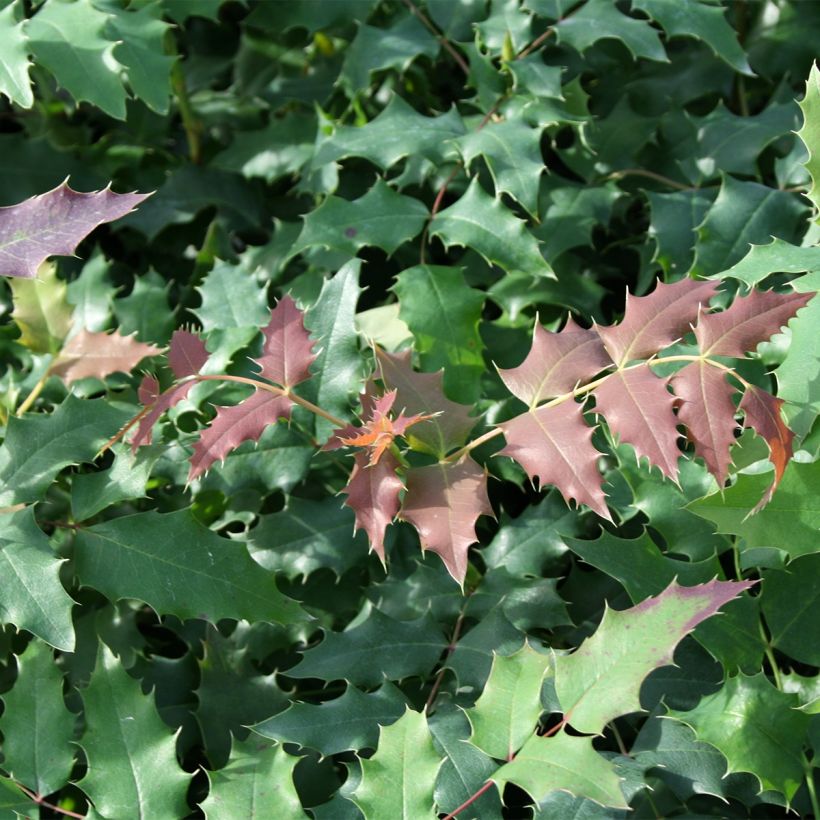

Plant habit
Flowering
Foliage
Botanical data
Mahonia
x wagneri
Fireflame
Berberidaceae
Oregon grape, Mahonia
Cultivar or hybrid
Other Mahonia
View all →Planting and care
The Mahonia x wagneri Fireflame should be planted in spring or autumn, in a loose and deep, neutral or even alkaline, well-tilled soil. Resistant to wind and pollution, it can tolerate full sun in cold regions and in the North, but prefers partial to dense shade in our hot regions. Once established, this Mahonia will tolerate summer drought, especially if planted in deep soil. It also withstands competition from the roots of large trees. Prune after flowering to maintain a regular and harmonious shape, but this will deprive you of the beautiful fruiting that can occur on reddened foliage. It is sometimes attacked by powdery mildew in humid climates as well as when when planted in area which is too arid and hot. Rust, which produces small orange dots on the underside of the leaves, is also quite common in humid climates. Do not plant too tightly in flower beds, as it prefers an airy environment.
Planting period
Intended location
Care
Planting & care advice
-
, onOrder confirmed
Reply from on Promesse de fleurs
Similar products
Haven't found what you were looking for?
Hardiness is the lowest winter temperature a plant can endure without suffering serious damage or even dying. However, hardiness is affected by location (a sheltered area, such as a patio), protection (winter cover) and soil type (hardiness is improved by well-drained soil).

Photo Sharing Terms & Conditions
In order to encourage gardeners to interact and share their experiences, Promesse de fleurs offers various media enabling content to be uploaded onto its Site - in particular via the ‘Photo sharing’ module.
The User agrees to refrain from:
- Posting any content that is illegal, prejudicial, insulting, racist, inciteful to hatred, revisionist, contrary to public decency, that infringes on privacy or on the privacy rights of third parties, in particular the publicity rights of persons and goods, intellectual property rights, or the right to privacy.
- Submitting content on behalf of a third party;
- Impersonate the identity of a third party and/or publish any personal information about a third party;
In general, the User undertakes to refrain from any unethical behaviour.
All Content (in particular text, comments, files, images, photos, videos, creative works, etc.), which may be subject to property or intellectual property rights, image or other private rights, shall remain the property of the User, subject to the limited rights granted by the terms of the licence granted by Promesse de fleurs as stated below. Users are at liberty to publish or not to publish such Content on the Site, notably via the ‘Photo Sharing’ facility, and accept that this Content shall be made public and freely accessible, notably on the Internet.
Users further acknowledge, undertake to have ,and guarantee that they hold all necessary rights and permissions to publish such material on the Site, in particular with regard to the legislation in force pertaining to any privacy, property, intellectual property, image, or contractual rights, or rights of any other nature. By publishing such Content on the Site, Users acknowledge accepting full liability as publishers of the Content within the meaning of the law, and grant Promesse de fleurs, free of charge, an inclusive, worldwide licence for the said Content for the entire duration of its publication, including all reproduction, representation, up/downloading, displaying, performing, transmission, and storage rights.
Users also grant permission for their name to be linked to the Content and accept that this link may not always be made available.
By engaging in posting material, Users consent to their Content becoming automatically accessible on the Internet, in particular on other sites and/or blogs and/or web pages of the Promesse de fleurs site, including in particular social pages and the Promesse de fleurs catalogue.
Users may secure the removal of entrusted content free of charge by issuing a simple request via our contact form.
The flowering period indicated on our website applies to countries and regions located in USDA zone 8 (France, the United Kingdom, Ireland, the Netherlands, etc.)
It will vary according to where you live:
- In zones 9 to 10 (Italy, Spain, Greece, etc.), flowering will occur about 2 to 4 weeks earlier.
- In zones 6 to 7 (Germany, Poland, Slovenia, and lower mountainous regions), flowering will be delayed by 2 to 3 weeks.
- In zone 5 (Central Europe, Scandinavia), blooming will be delayed by 3 to 5 weeks.
In temperate climates, pruning of spring-flowering shrubs (forsythia, spireas, etc.) should be done just after flowering.
Pruning of summer-flowering shrubs (Indian Lilac, Perovskia, etc.) can be done in winter or spring.
In cold regions as well as with frost-sensitive plants, avoid pruning too early when severe frosts may still occur.
The planting period indicated on our website applies to countries and regions located in USDA zone 8 (France, United Kingdom, Ireland, Netherlands).
It will vary according to where you live:
- In Mediterranean zones (Marseille, Madrid, Milan, etc.), autumn and winter are the best planting periods.
- In continental zones (Strasbourg, Munich, Vienna, etc.), delay planting by 2 to 3 weeks in spring and bring it forward by 2 to 4 weeks in autumn.
- In mountainous regions (the Alps, Pyrenees, Carpathians, etc.), it is best to plant in late spring (May-June) or late summer (August-September).
The harvesting period indicated on our website applies to countries and regions in USDA zone 8 (France, England, Ireland, the Netherlands).
In colder areas (Scandinavia, Poland, Austria...) fruit and vegetable harvests are likely to be delayed by 3-4 weeks.
In warmer areas (Italy, Spain, Greece, etc.), harvesting will probably take place earlier, depending on weather conditions.
The sowing periods indicated on our website apply to countries and regions within USDA Zone 8 (France, UK, Ireland, Netherlands).
In colder areas (Scandinavia, Poland, Austria...), delay any outdoor sowing by 3-4 weeks, or sow under glass.
In warmer climes (Italy, Spain, Greece, etc.), bring outdoor sowing forward by a few weeks.






























